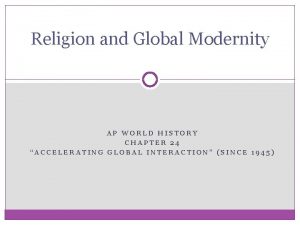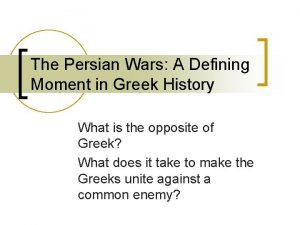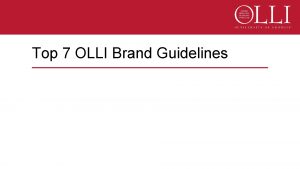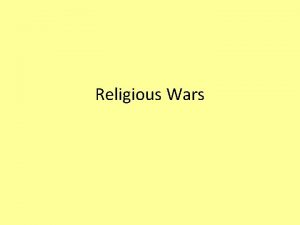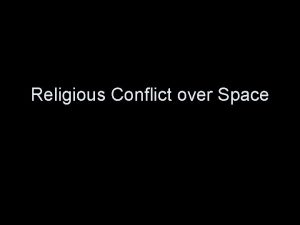Religious Wars OLLI Fall 2018 History of the











- Slides: 11

Religious Wars OLLI, Fall, 2018 History of the Christian Church from the Reformation to Today

Religious Wars • “Into the details of religious wars from the Peace of Augsburg (1555) to the Peace of Westphalia (1648) we cannot go. Those properly belong to military and political history, though religion was webbed into the events at most points. ”

War of the Three Henrys, France • Calvinism gained many converts, especially among nobility. • But, resisted by Catholic majority. • Massacre of St. Bartholomew’s Day, 1572, thousands of Huguenots (French Protestants) slaughtered.

War of the Three Henrys, France, 2 • A prolonged civil war followed, out of which Henry IV emerged victorious, after changing from Catholic, to Protestant, and back to Catholic! “Paris is worth a Mass. ” • Guaranteed certain freedoms to the Huguenots. Struggle continued in France.

Thirty Years War • 1618 -1648, grew in part from Protestant advances on Catholics in Germany and Catholic determination to enforce Peace of Augsburg.

Thirty Years War, 2 • Many European nations, from Sweden in the north to Spain in the south were involved. It was in the end, somewhat indecisive: “Catholics could not gain the north nor Protestants the south. Power more than religion preoccupied participants. ”

Thirty Years War, 3 • “When peace came at Westphalia in 1648, Europe took a turn to the modern power picture and the Age of the Reformation was ending. ” • Rome could never again determine the political life of western Europe. Protestantism had seen the limits of its military possibilities. • Protestantism plagued by disunities.

Thirty Years War, 4 • Catholicism redefining its purpose. Jensenism (named after Cornelius Jansen. . — 1638) rallied pious commoners and middle classes against moral laxity of the Church. Sometimes Jansenism described as “Catholic Calvinism. ” Overstress on the Eucharist and too-easy reliance on penance came under attack. Attempts by popes to suppress the ascetic, and anti-cultural heresy failed.

Consequences of the Religious Wars • Since religion had led to so much war in Germany, and Germans were moving more and more to political unity with nationalist sentiments, “many Germans came to the conclusion that doctrinal differences should not lead to war, and that religious tolerance was a wiser policy. ”

Consequences of the Religious Wars, 2 • Partially based on the frustration with so much war based on religion and “partially as a result of new scientific discoveries, rationalism took hold in Europe. Why be concerned about details of Christian doctrine that produce nothing but quarrels and prejudice, when natural reason, a faculty common to all human beings, can answer the fundamental questions regarding God and human nature? ”

Consequences of the Religious Wars, 2 • So there was a gradual move towards a more secular, “rational” understanding of the world as we passed into the eighteenth century, and Christianity was slowly subordinated to a search for answers in the natural and rational world inhabited by man.
